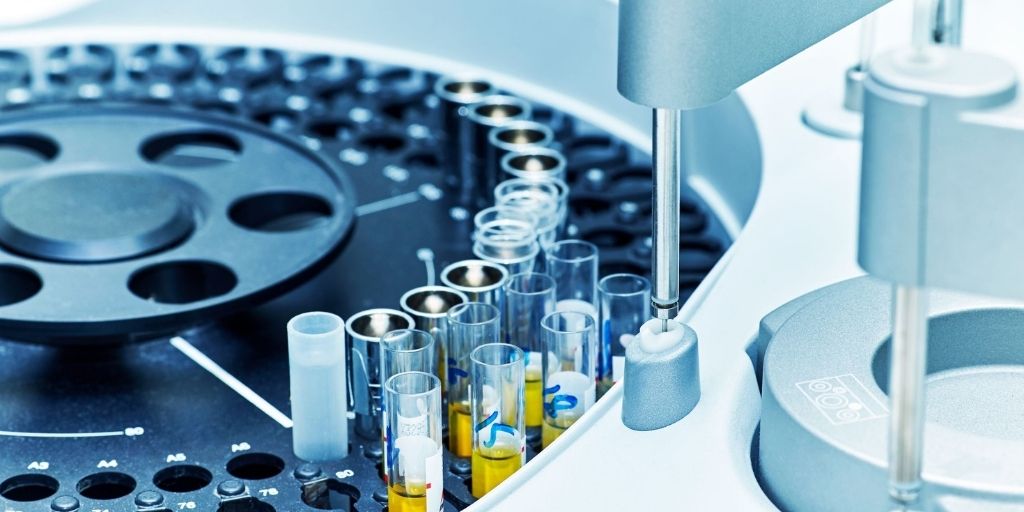
Medical conditions such as meningitis, an infection of the protective membranes that surround the brain and spinal cord, can be very serious if not treated quickly. Medical testing provides doctors with the clarification needed to administer the best treatment — fast. Here Stewart Goulding, managing director of precision drive system supplier, EMS, explores how medical testing is being improved further by precision micromotors.
Over one million patients complete an NHS Health Check each year, which involves a number of measurements and tests, such as a blood test. The demand for medical testing is high, and the associated laboratories and equipment must be able to keep up. Automation has moved analysis away from a reliance on manual testing, bringing faster and more accurate results.
The automated lab
Medical testing laboratories process thousands of samples a day, and have to carry out a multitude of different tests. Laboratories perform in vitro diagnostics, which are tests conducted on samples taken from the human body to diagnose a disease or health condition.
For instance, blood samples may need to be analysed for haemoglobin and platelet levels, whereas urine could require testing for the presence of protein and glucose. With so many samples and tests all being processed at once, laboratories need efficient and fool proof processes to ensure patients receive reliable results fast.
Automation is boosting the productivity and accuracy of laboratories. For instance, a robotic lab assistant designed by scientists at the University of Liverpool was able to perform 1,000 times faster than a human in trials. Being able to work seven days a week for 22 hours a day, with two hours to recharge each night, the robot can move around the laboratory and conduct scientific experiments just like a human.
Almost the entire analysis process can be automated in a medical testing laboratory. A scanner can inspect the barcode on the sample and record the type of analysis required. The sample can then be moved around the laboratory on a motorised conveyer belt or small trolley with a wheel drive to the relevant analysis station.
There, a robotic arm can pick up the sample and place it into the testing machine. This could be a motorised centrifuge, for example, which can separate the sample into its components, such as blood into red blood cells, platelets and plasma. Drive technology is also used in processes such as pipetting, liquid handling, mixing and stirring.
Motor musts
By selecting a high quality drive system, design engineers can improve the performance of automated testing equipment. For instance, a high torque motor can allow a conveyer belt to transport heavy loads of samples. Drive systems that are able to achieve high speeds enable robotic arms to pick and place samples at a fast rate.
It’s important that these systems remain as compact and lightweight as possible to keep the bulk of equipment at a minimum, allowing many testing devices to fit into the laboratory floor space. High accuracy and efficiency is also a crucial requirement, ensuring the machines perform to precise measurements and can reliably operate for long periods of time.
Sole UK supplier of FAULHABER motors, EMS, supplies the FAULHABER BXT series, a range of high performance brushless motors. Their external rotor and innovative winding technology delivers a high torque of up to 134 millinewton meters (mNm) and a continuous output up to 100 watts (W). With a flat construction, the motors are available in lengths as short as 14 millimetres (mm), making them a power dense solution for automated equipment.
The unhoused BXT R models are ideal for speed-controlled applications in which high powers are transformed, such as conveyer belts, as the residual heat from the motor is optimally dissipated.
The housed BXT H range, however, is recommended for positioning applications, such as robotic arms, as the motors can be combined with a variety of optical and magnetic encoders. The BXT H housing also serves as protection against contact and contamination, keeping equipment hygienic, yet are just as compact as the BXT R unhoused version.
Rapid results
However, not all medical testing requires samples to be sent off to a separate laboratory. Point-of-Care (PoC) testing is medical analysis that is performed at or near the site where the patient is located. It can involve molecular, antigen or antibody tests. As apposed to offsite testing laboratories, which can provide results in hours or days, PoC tests can provide results in a matter of minutes.
The rapid nature of PoC analysis has made it valuable during the COVID-19 pandemic, allowing quick isolation and treatment of infected patients. However, it can also be used to diagnose other viral infections, such as group A streptococci, from a throat swab, or to analyse blood or urine samples.
The individual conducting the PoC analysis only needs to carryout a few simple tasks, as an automated lab system can take care of the rest. Depending on the test being conducted, motors in the PoC equipment can power transporting, rotating and shaking of samples, as well as mixing reagents.
Understanding the root cause of a patient’s symptoms is crucial for doctors to evaluate the best treatment for recovery. Automated equipment powered by precision micromotors with high torque are speeding up medical testing equipment and facilities — bringing patients relief faster.











